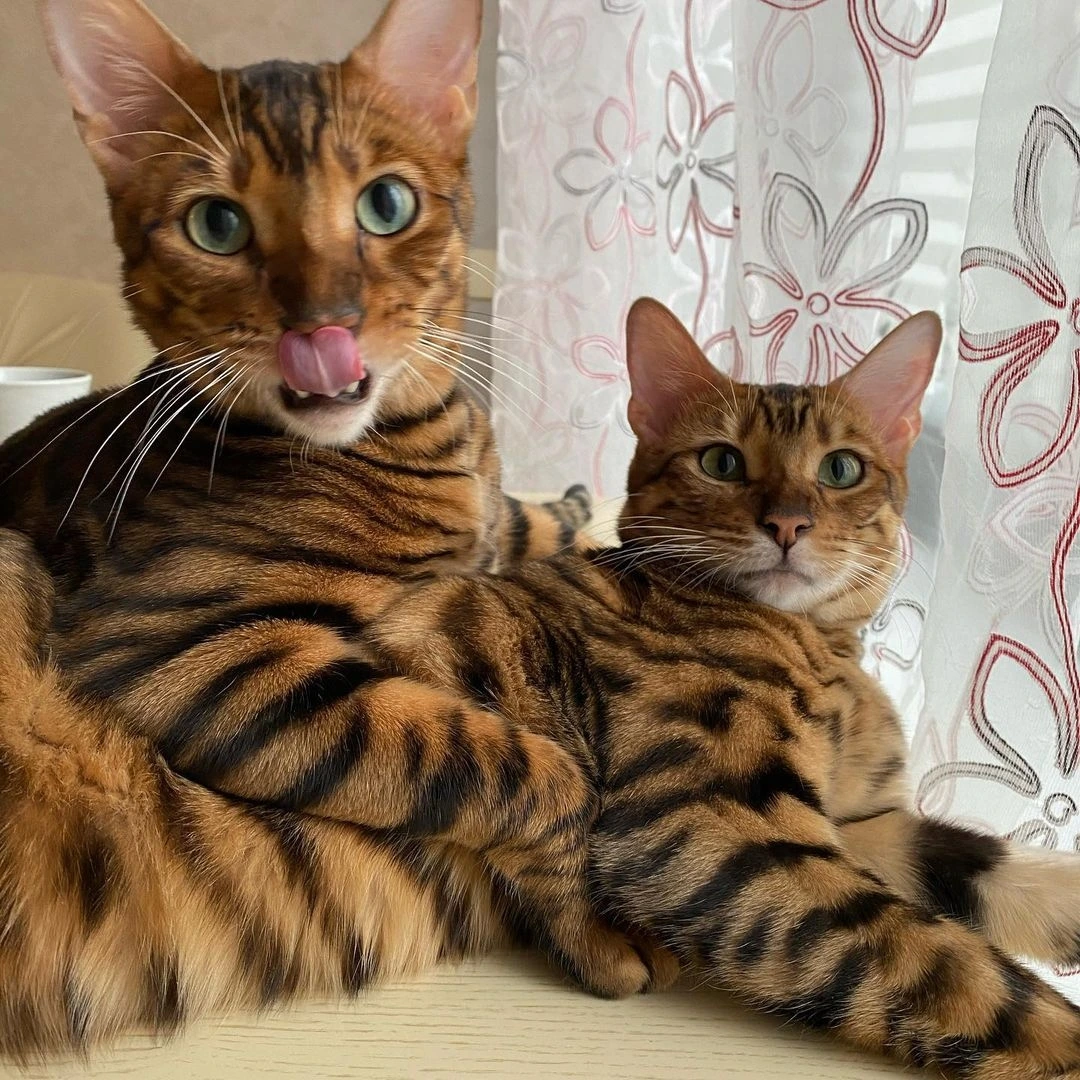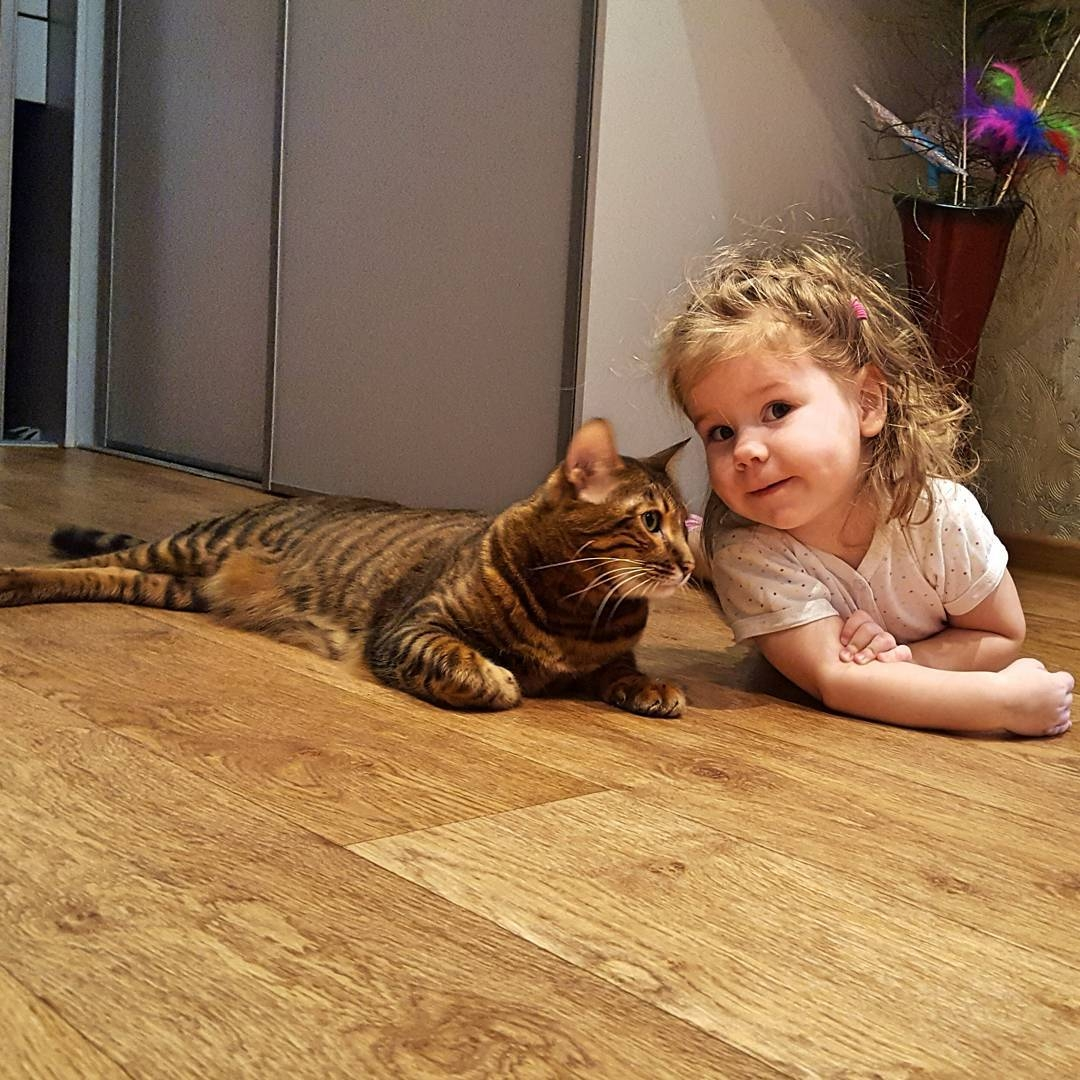Table of Contents

Introduction to Toyger Cats
The Toyger is a newer breed, purpose bred to look like an actual "toy tiger" as its name suggests. These gorgeous house cats sport a unique orange coat with bold black stripes that give a mini-tiger look to which cat lovers simply can’t resist.
Unlike wild tigers, Toygers are totally domesticated, loving pets that are great with kids. Their striking looks, along with their friendly nature, has helped them gain wide popularity among cat enthusiasts.
History & Origin of the Toyger Breed
Toyger is a breed developed in the 1980s by breeder Judy Sugden, daughter of Jean Mill, who invented the Bengal cat breed. Judy's dream was to produce a domestic cat with branching stripes that mimic the coat pattern of an tiger.
"My goal was to create a cat that would remind people of the endangered wild tiger and perhaps inspire them to protect these magnificent animals in the wild."
— Judy Sugden, Toyger Creator
The foundation mackerel tabby domestic shorthair used for the breeding program was the domestic shorthair mackerel tabby, Scrappy, who had unusual spots on his temples that loosely resembled the circular markings on a tiger’s head. Careful selective breeding of Bengal and domestic shorthaired cats led to the desired appearance of the Toyger.
The Toyger has been accepted for registration by TICA since 1993 and approved for championship in 2007. Although still uncommon, Toygers are becoming more common and popular as other breeders have joined the program to perfect the appearance of this stunning breed.
Distinctive Physical Appearance
Toygers are of moderate size with substantial bodies that typically weigh anywhere between 7 and 15 pounds. They are most recognized by their breathtaking coat pattern – a deep striping of black ontop of a vibrant orange coat, reminiscent of a tiger’s fur. Instead of a straight tabby pattern, Toyger markings also frequently consist even of black areas which have burst or branched pattern, which can give quite chaotic or wild appearance.

Facial Features
Toygers also have rounded head prints and striking facial lines that are complimenting their wild look. Their overall tigerish patterning is further accentuated by their little, shortened ears and deep set eyes.

Body Structure
Toygers have long, slender bodies and high shoulders, and they also possess the flowing movements of the wild tigers. Their powerful legs and hulking feet make them even more striking.
Key Physical Characteristics
-
Coat: Short, soft, luxurious fur with distinctive tiger-like stripes
-
Head: Medium-sized with circular pattern markings and small, rounded ears
-
Body: Long, muscular with high shoulders similar to tigers
-
Eyes: Small to medium, typically deep-set with circular markings around them
-
Tail: Long and thick with ringed stripes, carried low like a tiger
Breeders are still working to increase the wild look of the Toyger, concentrating on formulating more rounded face markings, a broader nose and more prominent striping. It is worth bearing in mind with all those wild looks toygers are still 100% domestic cats with no wild blood.
Personality & Temperament
Despite their wild appearance, Toygers have friendly, outgoing personalities that make them excellent companions. They are intelligent, curious cats that enjoy interactive play and can even learn to walk on a leash with proper training.
Toygers are known for being:
-
Affectionate: They form strong bonds with their human families
-
Intelligent: Quick learners who enjoy puzzle toys and training
-
Sociable: Generally good with children, other cats, and even cat-friendly dogs
-
Playful: Retain their kitten-like playfulness well into adulthood

Are Toygers Good Family Pets?
Toygers make excellent family companions for several reasons:
Family-Friendly
Gentle and patient with children when properly socialized
Adaptable
Adjust well to various living situations, including apartments
Moderately Vocal
Communicate with soft chirps and meows rather than loud yowling
While Toygers are generally easygoing, they do thrive on interaction and mental stimulation. They're not typically "lap cats" who will lounge around all day - expect an active companion who will want to participate in family activities and explore their environment.
Toyger Care Guide
Diet & Nutrition
Toygers thrive on a high-quality diet that supports their muscular build and active lifestyle. As with all cats, protein should be the primary component of their diet.
Recommended Diet Options:
-
Premium Commercial Food: High-quality dry or wet cat food with real meat as the first ingredient
-
Raw or Fresh Food: Some breeders recommend a balanced raw diet or fresh cat food subscription services
-
Mixed Feeding: A combination of dry food for dental health and wet food for hydration
Always provide fresh water and monitor your Toyger's weight, adjusting portions as needed to maintain ideal body condition.
Consult with your veterinarian to develop a feeding plan tailored to your Toyger's specific needs based on age, weight, and activity level.

Living with a Toyger
Toygers adapt well to various living situations, including apartments and houses. They are social cats that enjoy being part of family activities and generally get along well with children and other pets when properly introduced.
Good with children
Patient and playful with kids of all ages
Good with other pets
Sociable with cats and cat-friendly dogs
Apartment-friendly
Adapts well to smaller living spaces
Low separation anxiety
Can entertain themselves when alone
While Toygers are not overly demanding, they do appreciate companionship and will often follow their owners around the house. They're not typically "lap cats," but they enjoy being near their people and participating in daily activities.

